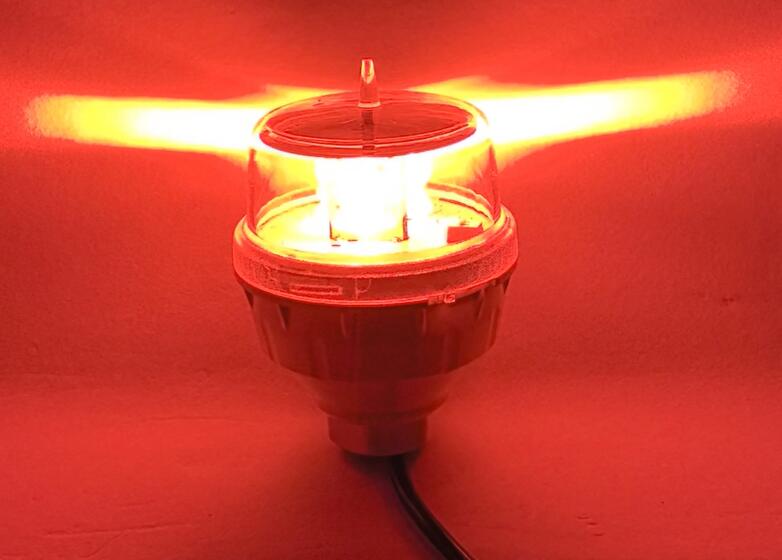The Critical Role of Obstruction Lighting Systems in Modern Aviation Safety
Obstruction lighting systems are essential for ensuring aviation safety by marking tall structures that could pose hazards to aircraft. These systems are installed on buildings, towers, wind turbines, and other high-rise infrastructure to provide visual warnings to pilots, particularly during nighttime or low-visibility conditions. With advancements in lighting technology, modern obstruction lighting systems have become more efficient, reliable, and compliant with stringent aviation regulations.
Why Obstruction Lighting Systems Are Indispensable
1. Preventing Mid-Air Collisions
The primary purpose of obstruction lighting systems is to alert pilots to potential obstacles in their flight path. Without proper lighting, structures like communication towers, power lines, and skyscrapers could become invisible threats, especially in poor weather conditions.

2. Compliance with Aviation Regulations
International aviation authorities, including the FAA (Federal Aviation Administration) and ICAO (International Civil Aviation Organization), mandate the use of obstruction lighting on structures exceeding certain heights. These regulations ensure uniformity in lighting standards, helping pilots navigate safely.
| obstruction lighting system |
3. Enhancing Safety for Urban Air Mobility (UAM) and Drones
With the rise of drone operations and urban air mobility (UAM), obstruction lighting systems are becoming even more critical. These systems help unmanned aerial vehicles (UAVs) and future air taxis detect and avoid obstacles, reducing the risk of accidents.
Key Components of an Effective Obstruction Lighting System
1. High-Intensity LED Lights
Modern obstruction lighting systems predominantly use LED technology due to its brightness, energy efficiency, and long lifespan. LEDs provide consistent illumination while consuming less power than traditional incandescent or halogen lights.
| obstruction light system |
2. Dual Lighting Systems (Red & White)
Depending on the structure's height and location, obstruction lighting systems may incorporate both red beacons (for nighttime) and medium-intensity white strobes (for daytime). This dual approach ensures visibility under all lighting conditions.
3. Automatic Light Sensors
Many obstruction lighting systems now include photocell sensors that automatically adjust brightness based on ambient light conditions. This feature enhances efficiency while maintaining compliance with aviation requirements.
4. Redundancy and Fail-Safe Mechanisms
To ensure uninterrupted operation, high-quality obstruction lighting systems incorporate backup power supplies and self-monitoring features that alert maintenance teams in case of a malfunction.
Applications of Obstruction Lighting Systems
1. Telecommunication and Broadcast Towers
Tall communication masts are among the most common structures requiring obstruction lighting. These systems help prevent collisions with low-flying aircraft, particularly in rural areas where towers may be less visible.
2. Wind Farms
Wind turbines, often located in open areas, pose a significant risk to aviation. Obstruction lighting systems are installed on each turbine to ensure they are visible from a distance.
3. Skyscrapers and High-Rise Buildings
In urban environments, tall buildings must be equipped with obstruction lighting to guide aircraft, especially near airports or helicopter landing zones.
4. Bridges and Power Transmission Lines
Large bridges and high-voltage power lines also require obstruction lighting to prevent accidents involving low-altitude flights, such as medical helicopters or military aircraft.
Advancements in Obstruction Lighting Technology
1. Smart Monitoring and IoT Integration
Newer obstruction lighting systems incorporate IoT (Internet of Things) technology, allowing remote monitoring and diagnostics. Maintenance teams can receive real-time alerts about system failures, ensuring quick repairs.
2. Solar-Powered Solutions
For remote locations without easy access to electrical grids, solar-powered obstruction lighting systems provide a sustainable and cost-effective alternative.
3. Adaptive Lighting Systems
Some modern systems adjust light intensity based on weather conditions, increasing brightness during fog or heavy rain to maximize visibility.
Challenges and Future Trends
1. Balancing Visibility and Light Pollution
While obstruction lighting is crucial for safety, excessive brightness can contribute to light pollution. Future designs aim to optimize visibility while minimizing environmental impact.
2. Integration with Air Traffic Management Systems
As airspace becomes more congested, obstruction lighting systems may integrate with advanced air traffic control networks, providing real-time data to pilots and automated flight systems.
3. Standardization Across Global Markets
Different countries have varying regulations for obstruction lighting. Harmonizing these standards will improve global aviation safety and simplify compliance for multinational infrastructure projects.
Obstruction lighting systems play a vital role in safeguarding air travel by ensuring that tall structures are visible to pilots and drone operators. With advancements in LED technology, automation, and smart monitoring, these systems are becoming more efficient and reliable than ever before.
As urbanization and air traffic continue to grow, the demand for advanced obstruction lighting solutions will only increase. By adopting the latest innovations, industries can enhance aviation safety while meeting regulatory requirements and minimizing environmental impact.
